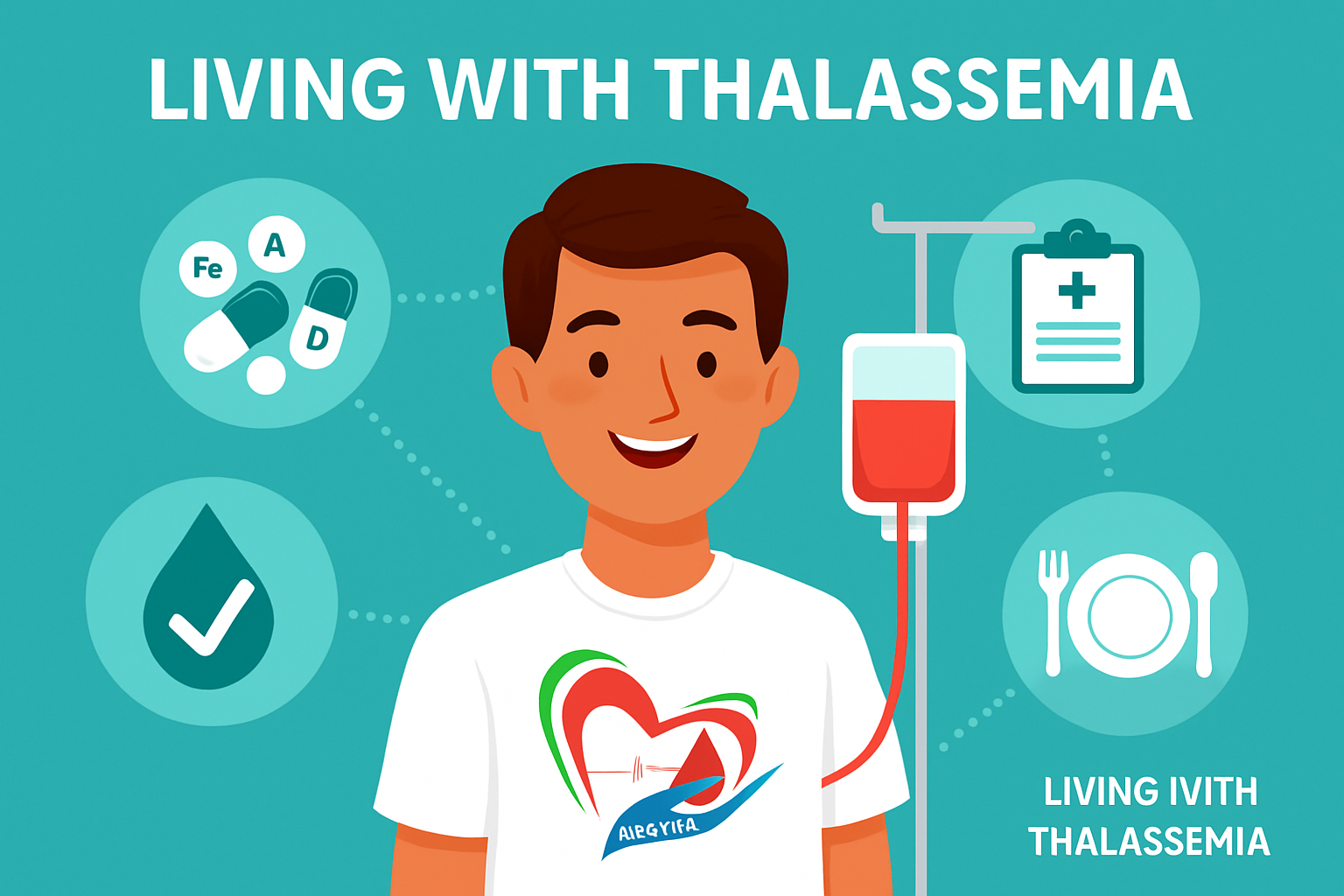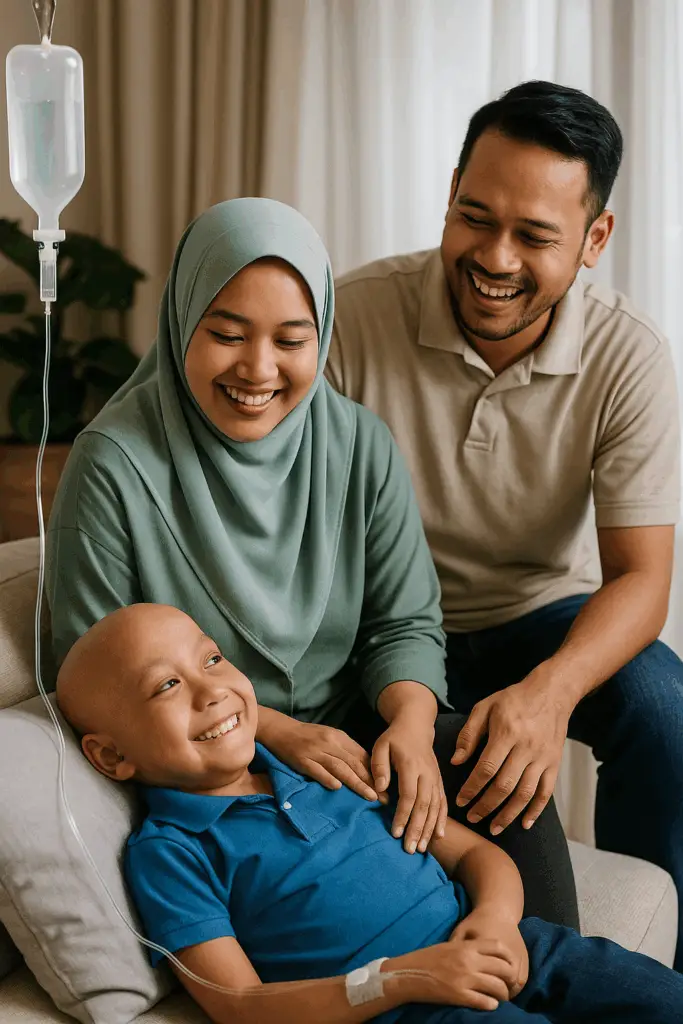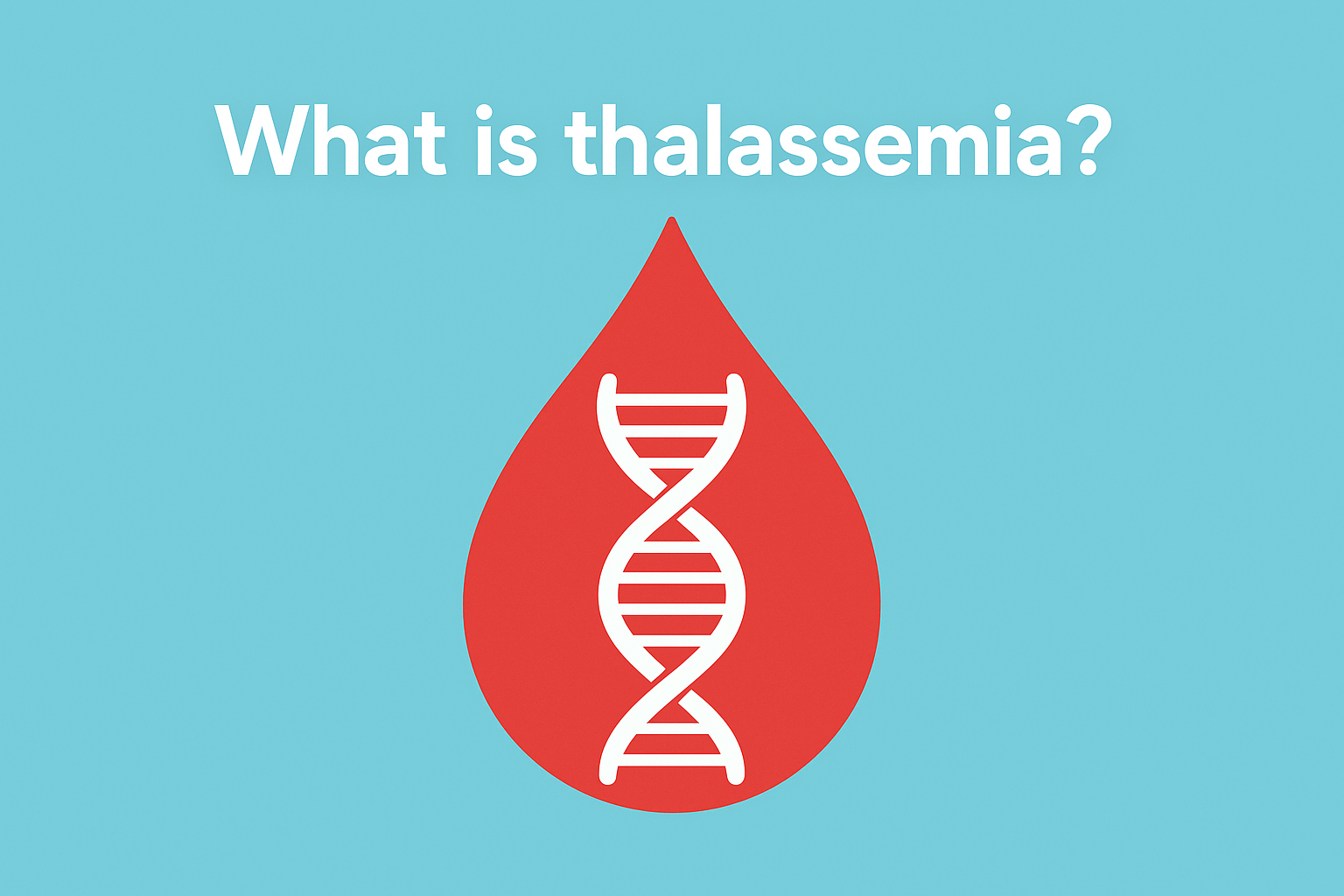
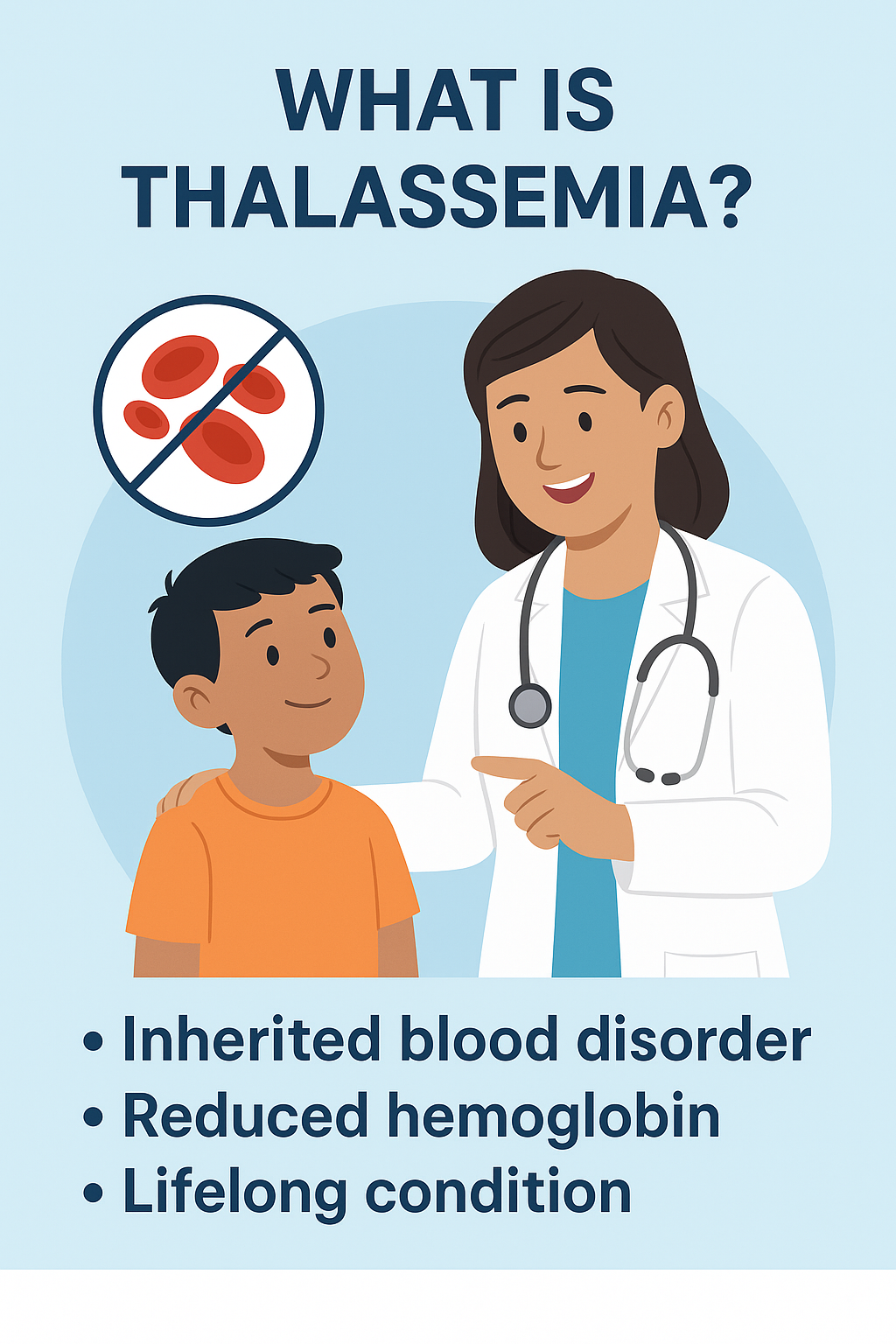
🩸 What is Thalassemia?
Thalassemia is a genetic blood disorder. This means it is passed down from parents to children through genes. It affects the body’s ability to make healthy red blood cells and hemoglobin — the part of your blood that carries oxygen.
🧬 How Does It Happen?
Inside our red blood cells is a protein called hemoglobin. It helps carry oxygen to every part of our body. People with Thalassemia do not make enough healthy hemoglobin, which leads to fewer red blood cells and less oxygen.
⚠️ What Are the Symptoms?
Some people have no symptoms, while others feel very weak or tired. Common signs include:
Pale or yellowish skin
Feeling tired all the time
Slow growth in children
Bone changes in the face (in severe cases)
Enlarged spleen
🔍 How Do You Get It?
Thalassemia is inherited, not contagious.
If both parents are carriers, there is a chance the child will have Thalassemia Major — the more serious type.
If only one parent is a carrier, the child may be a Thalassemia Trait (Minor) — usually with no symptoms.
🩸 Types of Thalassemia
| Type | Description |
|---|---|
| Thalassemia Major | Needs lifelong blood transfusions. Severe symptoms start early. |
| Thalassemia Minor | A carrier. Usually healthy but can pass the gene to children. |
| Intermedia | In between Minor and Major. May need treatment sometimes. |
💉 Can It Be Treated?
Yes — but not cured (except in rare cases like a bone marrow transplant).
With the right treatment, people with Thalassemia can live long, healthy lives. Treatments may include:
Regular blood transfusions
Iron chelation (to remove extra iron from the body)
Folic acid supplements
Monitoring and check-ups
Bone marrow transplant (for some)
🛡️ Can It Be Prevented?
Yes! Thalassemia can be prevented through:
Blood tests for carriers
Genetic counseling before having children
Awareness and education
🧡 Testing saves lives. Prevention begins with knowledge.
🧬 What is a Genetic Blood Disorder?
A genetic blood disorder is a condition passed down from parents to children through their genes. It affects how the body makes important parts of the blood, such as red blood cells, white blood cells, platelets, or hemoglobin.
🧬 How Does It Happen?
Our bodies are made up of trillions of cells. Inside each cell is DNA, which carries genes — the instructions for how our body works. If there’s a change (mutation) in a specific gene, it can affect how blood is produced or how it functions.
These changes can be inherited from one or both parents.
🩸 Types of Genetic Blood Disorders
Here are some common examples:
| Disorder | What It Affects |
|---|---|
| Thalassemia | Hemoglobin production in red blood cells |
| Sickle Cell Disease | Shape and flexibility of red blood cells |
| Hemophilia | Blood clotting ability |
| G6PD Deficiency | Red blood cell stability (especially with certain foods/medications) |
🔍 How Are They Inherited?
If both parents carry the same gene, a child may inherit the disorder.
If only one parent is a carrier, the child might become a carrier too — usually without symptoms.
That’s why carrier testing and genetic counseling are important for early prevention and awareness.
⚠️ Why Early Detection Matters
Some people with genetic blood disorders may have:
Severe anemia
Frequent infections
Delayed growth
Organ damage (if untreated)
Bleeding issues (in clotting disorders)
With early testing and medical care, many of these problems can be managed or prevented.
🩺 How Are They Treated?
There is no universal cure, but treatments depend on the disorder. They may include:
Blood transfusions
Iron chelation therapy
Folic acid or vitamin supplements
Bone marrow transplants (in some cases)
Special diets or avoiding triggers
🧡 What You Can Do
Learn your family history
Get tested if you plan to have children
Donate blood to support patients
Support awareness and education efforts
“Genetic blood disorders are inherited — but with knowledge, care, and support, they can be managed.”
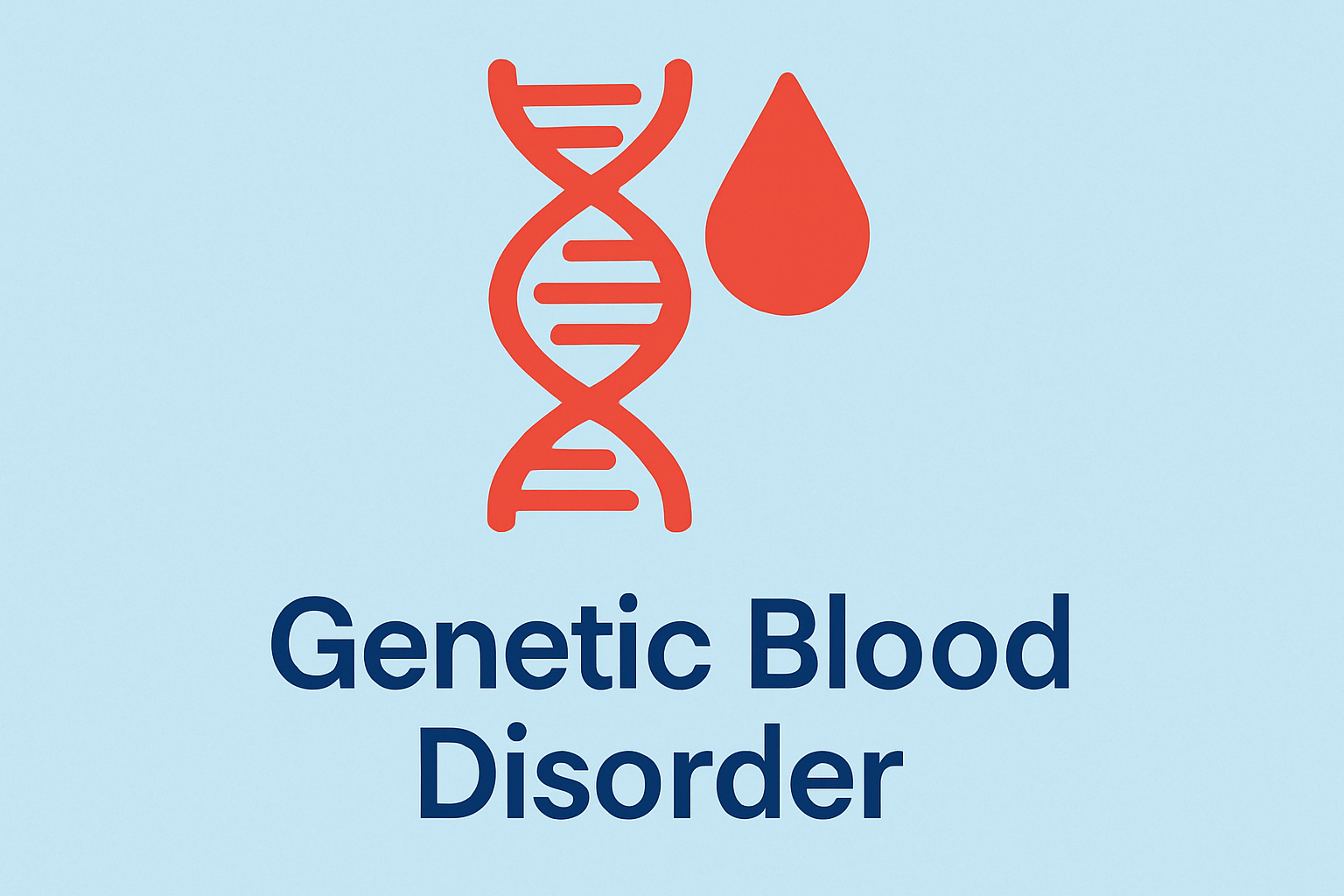

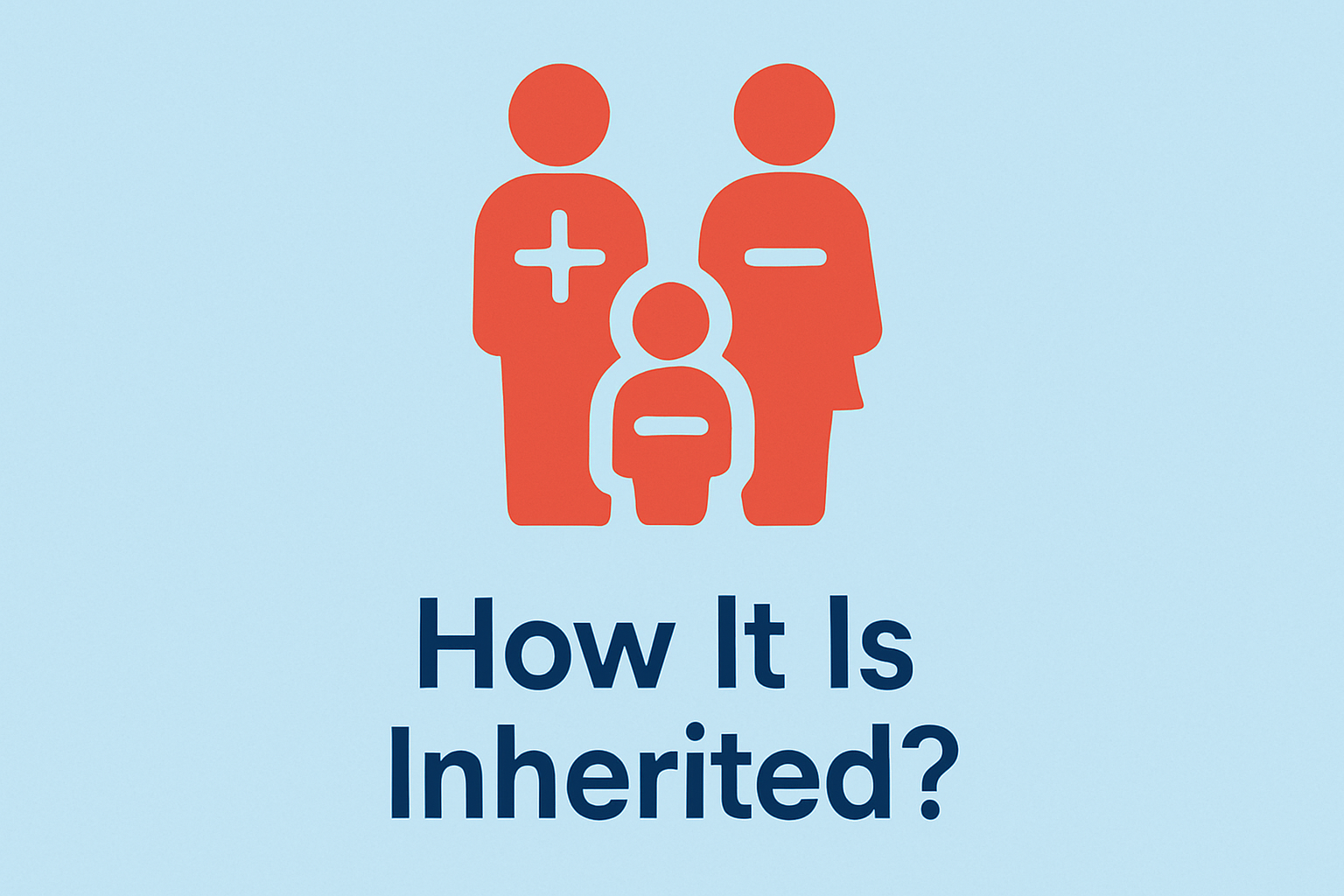
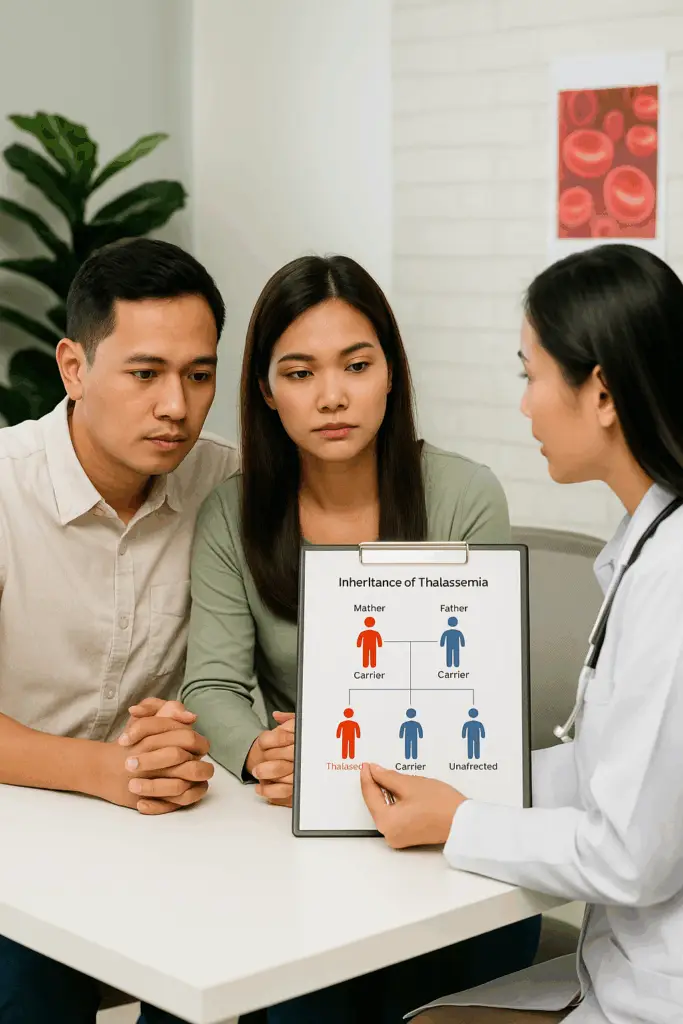
🧬 How Is Thalassemia Inherited?
🧬 It All Starts with Our Genes
Every person inherits two sets of genes — one from their mother and one from their father.
Thalassemia happens when there is a change (mutation) in the genes that control how the body makes hemoglobin — the protein in red blood cells that carries oxygen.
When these genes are altered, the body cannot produce healthy blood normally.
👨👩👧 How Does Inheritance Work?
If one parent passes down the faulty gene, the child becomes a carrier (also called Thalassemia Trait). Carriers usually have no symptoms but can pass the gene to their children.
If both parents pass down the faulty gene, the child may have Thalassemia Major — a serious condition that needs lifelong medical care.
| Parents’ Genes | Child’s Outcome |
|---|---|
| One carrier + One healthy | Child is likely a carrier (no symptoms) |
| Two carriers | 25% chance of Thalassemia Major, 50% chance of being a carrier, 25% chance of being healthy |
🧪 Why Genetic Testing Is Important
Because carriers often have no symptoms, many do not know they carry the Thalassemia gene.
Testing can help:
Identify carriers early
Guide couples when planning a family
Prevent unexpected Thalassemia Major births
“Knowing your genetic status can protect future generations.”
🩸 Key Facts About Inheritance
Thalassemia is NOT contagious — you cannot catch it like an infection.
Both parents must carry the gene for a child to be born with Thalassemia Major.
Carrier parents have a 1 in 4 chance of having an affected child with every pregnancy.
Testing before marriage or early in planning can change lives.
🧡 How PERKETHA Supports Early Awareness
At PERKETHA, we encourage:
Genetic screening programs
Premarital blood tests
Educational workshops for youth and families
We believe that knowledge is protection, and early action saves lives.
🧬 What is a Genetic Blood Disorder?
A genetic blood disorder is a condition passed down from parents to children through their genes. It affects how the body makes important parts of the blood, such as red blood cells, white blood cells, platelets, or hemoglobin.
🧬 How Does It Happen?
Our bodies are made up of trillions of cells. Inside each cell is DNA, which carries genes — the instructions for how our body works. If there’s a change (mutation) in a specific gene, it can affect how blood is produced or how it functions.
These changes can be inherited from one or both parents.
🩸 Types of Genetic Blood Disorders
Here are some common examples:
| Disorder | What It Affects |
|---|---|
| Thalassemia | Hemoglobin production in red blood cells |
| Sickle Cell Disease | Shape and flexibility of red blood cells |
| Hemophilia | Blood clotting ability |
| G6PD Deficiency | Red blood cell stability (especially with certain foods/medications) |
🔍 How Are They Inherited?
If both parents carry the same gene, a child may inherit the disorder.
If only one parent is a carrier, the child might become a carrier too — usually without symptoms.
That’s why carrier testing and genetic counseling are important for early prevention and awareness.
⚠️ Why Early Detection Matters
Some people with genetic blood disorders may have:
Severe anemia
Frequent infections
Delayed growth
Organ damage (if untreated)
Bleeding issues (in clotting disorders)
With early testing and medical care, many of these problems can be managed or prevented.
🩺 How Are They Treated?
There is no universal cure, but treatments depend on the disorder. They may include:
Blood transfusions
Iron chelation therapy
Folic acid or vitamin supplements
Bone marrow transplants (in some cases)
Special diets or avoiding triggers
🧡 What You Can Do
Learn your family history
Get tested if you plan to have children
Donate blood to support patients
Support awareness and education efforts
“Genetic blood disorders are inherited — but with knowledge, care, and support, they can be managed.”

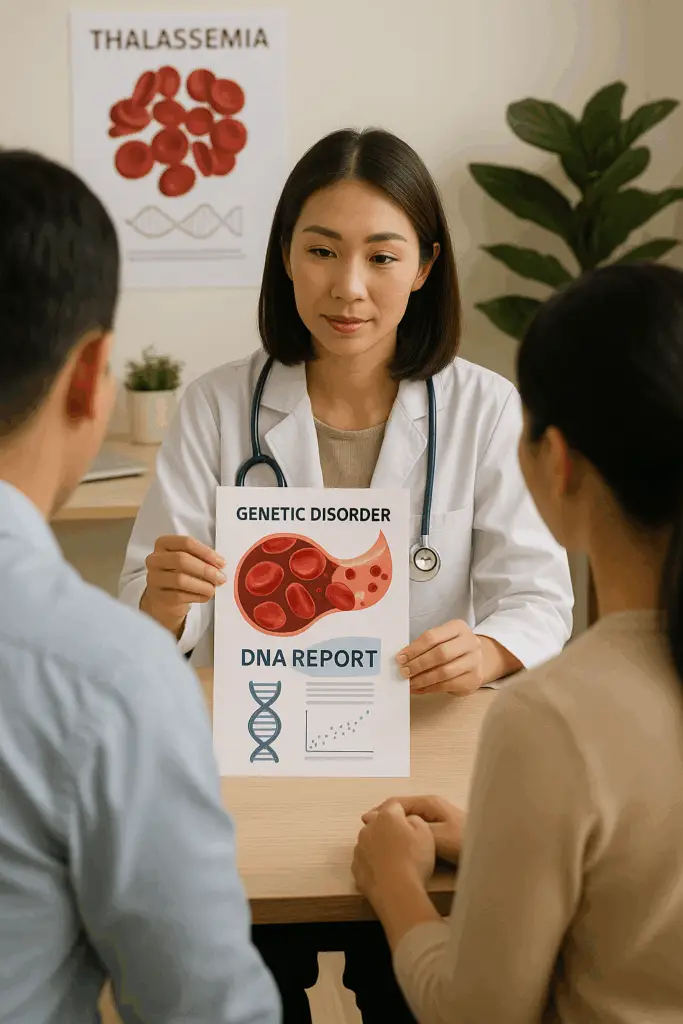
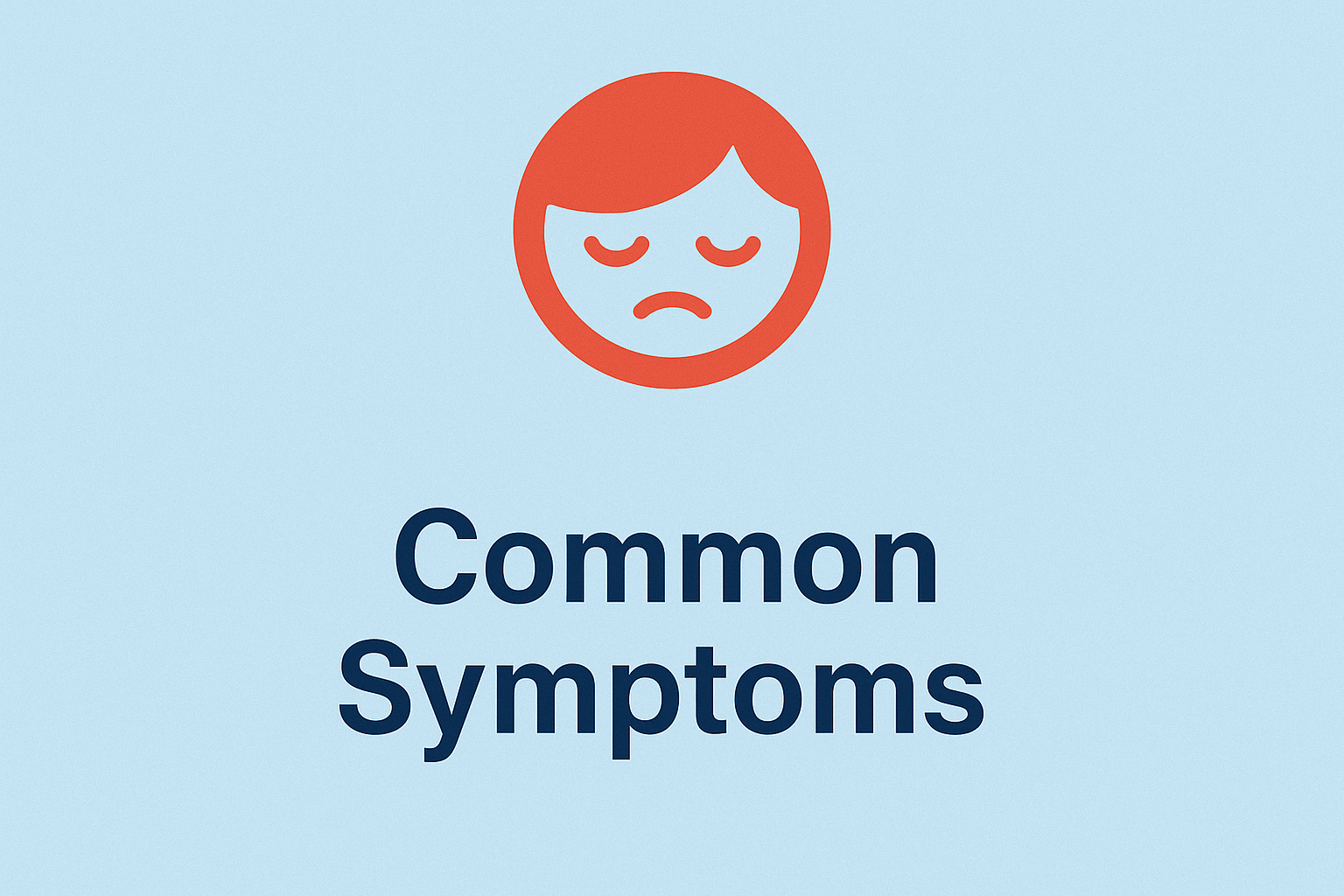
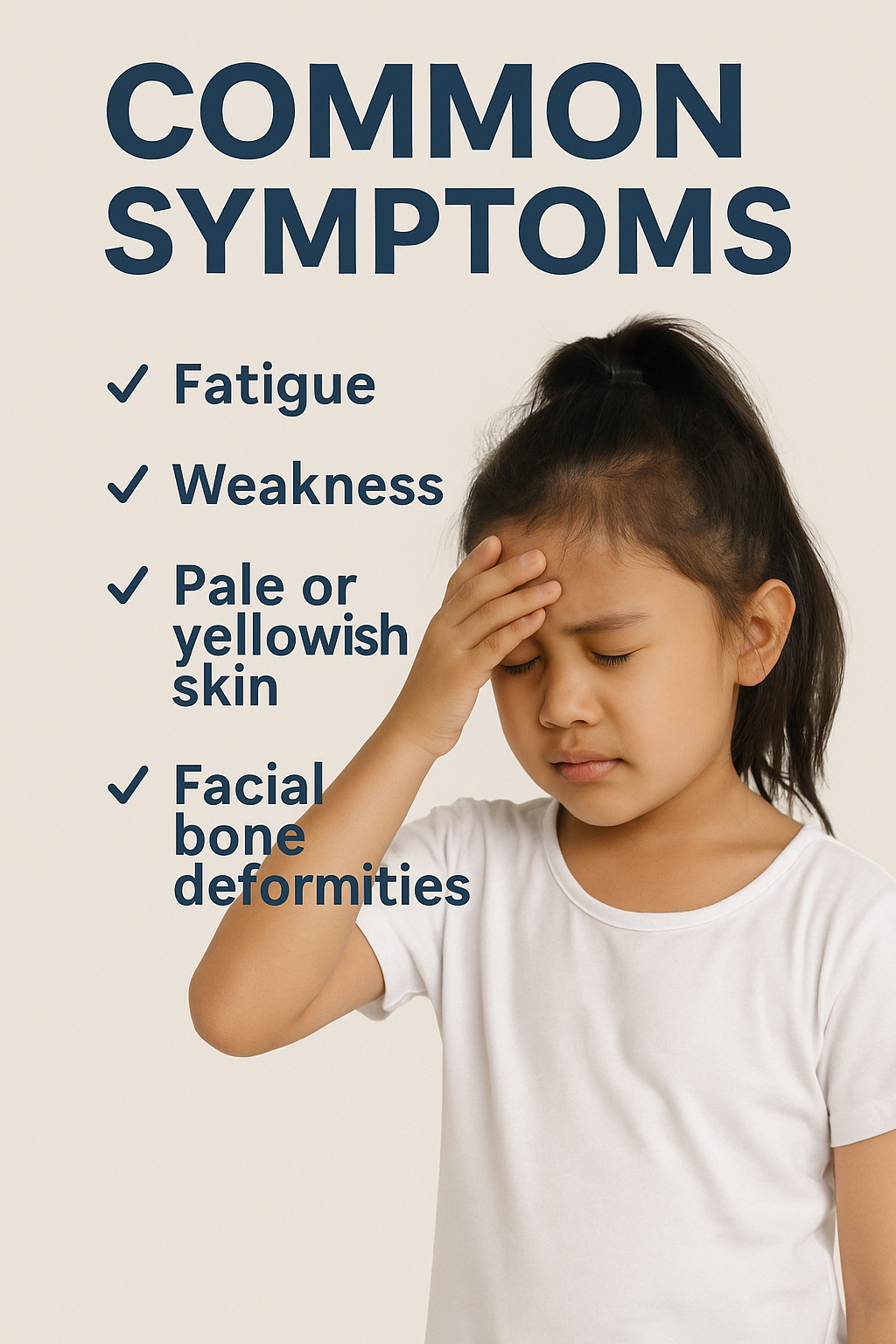
⚠️ Common Symptoms of Thalassemia
Thalassemia affects the production of healthy red blood cells. Because of this, many symptoms are linked to low oxygen levels in the body and anemia.
Symptoms can vary depending on the type of Thalassemia (Minor, Intermedia, or Major). Some people may have no symptoms, while others may experience more serious health issues.
🩸 Most Common Symptoms
😴 1. Tiredness and Fatigue
Lack of red blood cells leads to low oxygen, making the person feel weak or tired all the time.
😐 2. Pale or Yellowish Skin (Jaundice)
Low hemoglobin or the breakdown of red blood cells can cause a pale or yellow skin tone.
📏 3. Slow Growth and Delayed Puberty
Children with Thalassemia Major may not grow or develop at the same rate as others.
🦴 4. Bone Changes (especially face and skull)
To make more red blood cells, the body may expand bone marrow, causing changes in facial bones and skull shape (in severe cases).
🫀 5. Enlarged Spleen or Liver
The spleen may become overactive, trying to filter out damaged red blood cells.
💓 6. Shortness of Breath
Low oxygen can cause difficulty in breathing, especially after activity.
🧬 Thalassemia Trait (Carrier) Symptoms
Most people who are carriers (Thalassemia Minor):
Feel normal
May only show mild anemia in blood tests
Often don’t know they carry the gene
🧡 That’s why blood tests and early screening are so important.
When to See a Doctor
If your child or family member shows signs like:
Unusual tiredness
Very pale or yellow skin
Poor appetite and slow growth
…it’s important to seek medical advice and do a simple blood test.
How PERKETHA Can Help
PERKETHA supports early awareness by:
Educating families on symptom recognition
Promoting regular check-ups
Organizing free screening campaigns in Sabah
“Recognizing the signs early can lead to better treatment and quality of life.”
💖 Living With Thalassemia
Thalassemia is a lifelong condition, but with the right support and care, people living with it can lead healthy, meaningful, and active lives.
🩸 What It Means to Live With Thalassemia
Living with Thalassemia means learning to manage a condition that affects the body’s red blood cells and oxygen supply. It can involve:
Regular blood transfusions
Frequent medical check-ups
Iron chelation therapy to reduce iron overload from transfusions
Following a balanced lifestyle and diet
Emotional and mental strength
While it may sound challenging, many patients thrive with proper care and support.
🧡 Daily Life with Thalassemia
People with Thalassemia, especially Thalassemia Major, often develop a routine that helps them stay strong and feel in control. This may include:
✔️ Staying On Schedule
Regular transfusions (every 2–4 weeks)
Iron chelation medicine (oral or injection)
Monthly blood tests
🍎 Healthy Habits
Eating iron-aware foods (avoiding too much iron from diet)
Staying hydrated
Taking prescribed vitamins like folic acid
🧠 Mental and Emotional Wellbeing
Joining support groups
Talking with family and friends
Reaching out to counselors when needed
🧒 Children and Teens with Thalassemia
Kids and teenagers with Thalassemia may:
Miss school days for treatment
Experience delayed growth or puberty
Feel “different” from friends
That’s why it’s important for schools and communities to understand and provide emotional support. Encouragement and education make a huge difference.
🩺 Long-Term Care
As people with Thalassemia grow older, they need continued care. This includes:
Monitoring heart, liver, and bone health
Managing iron levels
Planning for adult life, education, career, and family
🤝 How PERKETHA Supports Patients
At PERKETHA, we believe no one should go through this journey alone. We offer:
Patient and parent support groups
Education and awareness campaigns
Help with accessing treatment and blood supplies
Empowerment workshops and youth engagement programs
“Living with Thalassemia is not the end — it’s a journey of courage, care, and community.”
